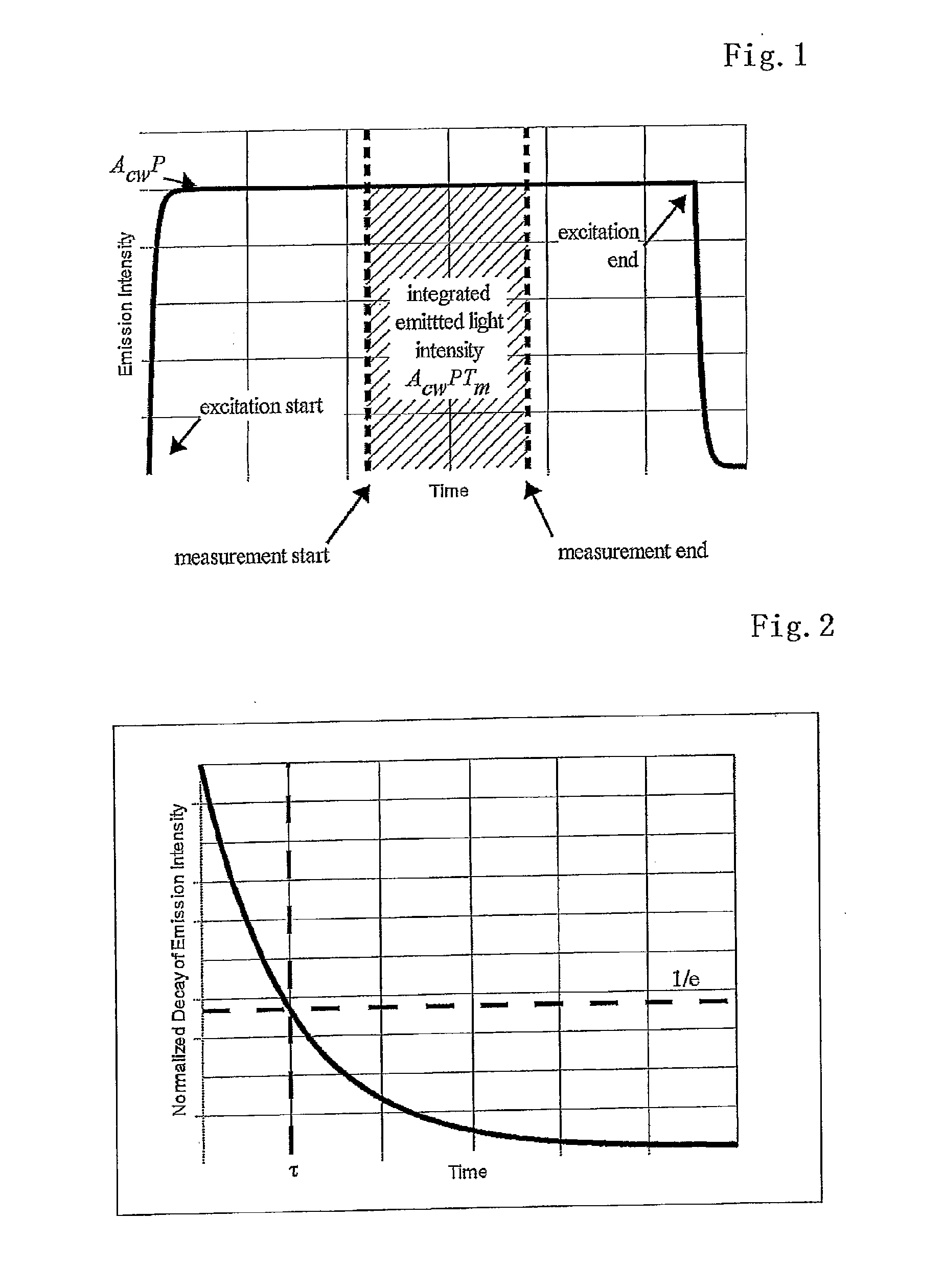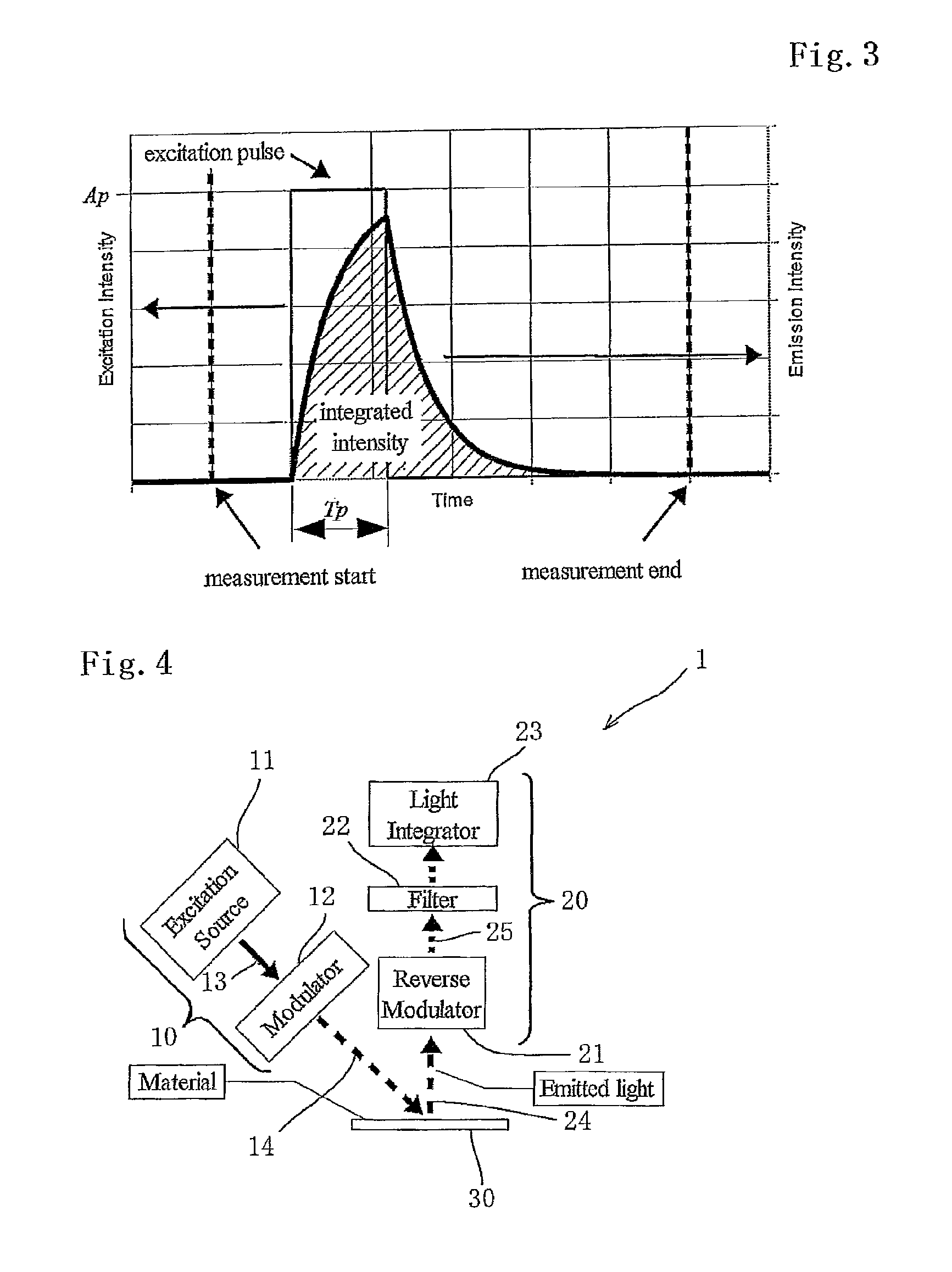Apparatus and method for measuring a luminescent decay
a technology of luminescent decay and measurement method, which is applied in the direction of luminescent dosimeters, optical radiation measurement, fluorescence/phosphorescence, etc., can solve the problems of absorbing electrical energy from cracks and defects, and wasting the whole purpose of solar cells
- Summary
- Abstract
- Description
- Claims
- Application Information
AI Technical Summary
Benefits of technology
Problems solved by technology
Method used
Image
Examples
Embodiment Construction
[0070]In order to evaluate a material such as a semiconductor, the current invention measures the light emitted (luminescence) from that material.
[0071]The energy of a non-valence electron in the crystal of a material is determined by the position of the conduction band, but can also be determined by a variety of states such as non-radiative centers, impurity levels, or other defect states. If an electron is in a non-thermal-equilibrium excited state, it will eventually recombine with a hole within a probable time giving rise to a carrier lifetime. That recombination causes an energy conversion which can be in the form of light emission, or in the form of vibrations or heat in the material. If the carrier recombines due to defects, impurities or cracks in the crystal, then the probability of emitting light due to natural recombination will be reduced. Because of this, in general the carrier lifetime is shorter in the presence of a high density of crystal defects. Therefore a measure...
PUM
| Property | Measurement | Unit |
|---|---|---|
| modulation frequency | aaaaa | aaaaa |
| frequency | aaaaa | aaaaa |
| frequency | aaaaa | aaaaa |
Abstract
Description
Claims
Application Information
 Login to View More
Login to View More - R&D
- Intellectual Property
- Life Sciences
- Materials
- Tech Scout
- Unparalleled Data Quality
- Higher Quality Content
- 60% Fewer Hallucinations
Browse by: Latest US Patents, China's latest patents, Technical Efficacy Thesaurus, Application Domain, Technology Topic, Popular Technical Reports.
© 2025 PatSnap. All rights reserved.Legal|Privacy policy|Modern Slavery Act Transparency Statement|Sitemap|About US| Contact US: help@patsnap.com



